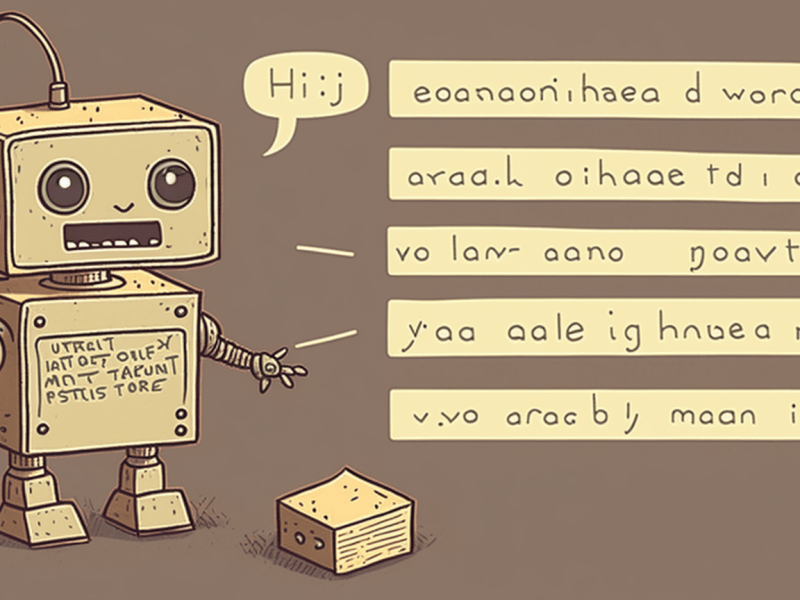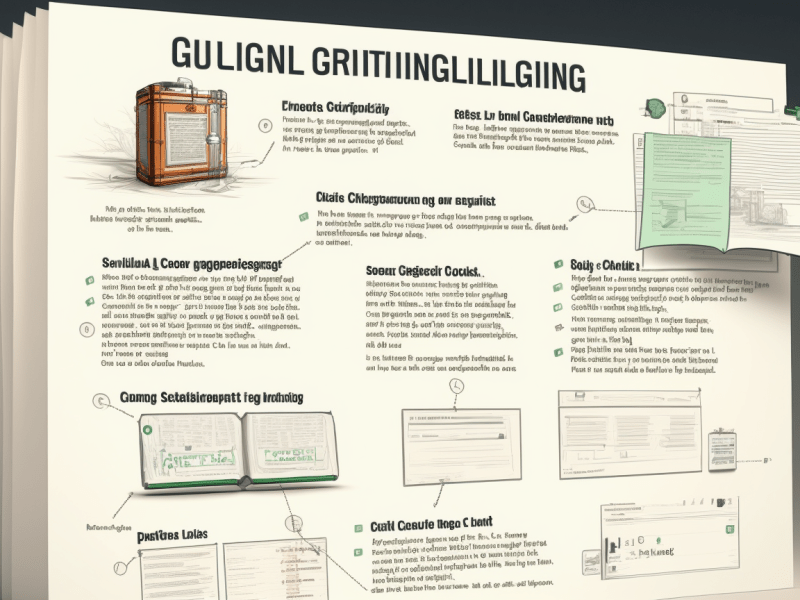Natural Language Generation – understand it now ►

Natural Language Generation – Content:
AI Natural Language Generation (NLG) is a rapidly developing field of artificial intelligence that promises to revolutionize communication between humans and machines. Its ability to create a human-like language from data has implications for various industries, including journalism, e-commerce, healthcare, and customer service. NLG technologies have already been used by companies like the Associated Press and Forbes to automate news article production and generate personalized content.
The potential of AI NLG lies in its ability to convert structured data into natural language text with minimal human input. This means that large amounts of data can be transformed into understandable narratives quickly, accurately, and at scale. The technology’s applications range from automatic report generation to chatbots that can hold conversations with customers in real time. Furthermore, AI NLG algorithms are continuously learning and improving based on feedback received from users or other sources.
Despite the many benefits of AI NLG, it also raises ethical concerns such as privacy violations, bias in language use, and job displacement due to automation. As organizations increasingly adopt these technologies for their operations, there needs to be an ongoing discussion around best practices for implementation and regulation. In this article, we will explore the concept behind AI NLG technology along with its current state-of-the-art techniques before delving into some of its most significant opportunities as well as challenges that need to be addressed moving forward.
Understanding Natural Language Generation
This section delves into the concept of natural language generation (NLG). NLG refers to a branch of artificial intelligence that involves generating human-like text or speech from structured data. Its goal is to create coherent and understandable narratives, summaries, reports, and other forms of written or spoken content that can mimic how humans communicate.
NLG has various applications across industries such as healthcare, finance, e-commerce, and journalism, among others. It enables machines to understand complex information quickly and present it in an easily digestible format for users. In healthcare, for example, NLG systems can help doctors and patients interpret medical records accurately by providing concise summaries of diagnoses and treatment options. Similarly, financial institutions use NLG technology to generate personalized investment advice tailored to individual client’s needs.
In summary, NLG plays a critical role in transforming raw data into meaningful insights that are easier for people to comprehend. The next section will explore how AI is revolutionizing this field even further.
How AI Is Revolutionizing Natural Language Generation
The world of language generation has come a long way since its inception. However, with the advent of artificial intelligence (AI), it has taken on an entirely new dimension. AI is revolutionizing natural language generation by enabling machines to generate human-like text that is not only grammatically correct but also contextually relevant.
One way in which AI is changing the landscape of natural language generation is through automated content creation. With AI-powered tools, businesses can create high-quality content at scale without compromising on quality or consistency. This technology allows companies to produce more personalized and engaging content for their target audience while saving time and resources.
Another significant development in AI-driven natural language generation is its ability to understand sentiment analysis. Machines are now capable of identifying emotions expressed in text, allowing them to tailor responses accordingly. This application has enormous implications for customer service interactions, where understanding tone and mood can make all the difference between a positive and negative experience.
Furthermore, machine learning algorithms have made it possible for computers to learn from vast amounts of data and improve over time continuously. As such, they can identify patterns, predict outcomes, and operate autonomously based on pre-defined parameters. These capabilities mean that businesses can use AI-generated insights to enhance decision-making processes across various areas.
In conclusion, the impact of AI on natural language generation cannot be overstated. The applications of this technology extend far beyond just automating tasks; instead, they offer new possibilities for creating more meaningful experiences across different industries. In the next section, we will explore some examples of how businesses can leverage these capabilities to drive innovation and achieve business objectives effectively.
Applications Of Natural Language Generation In Business
The implementation of Artificial Intelligence (AI) has revolutionized natural language generation in various domains, including business. Due to its ability to automate tasks and generate complex texts, it has become an essential tool for businesses to provide personalized content and enhance customer experience. AI Natural Language Generation (NLG) is a field that employs advanced algorithms to analyze data and produce human-like text with minimal human intervention.
One significant application of NLG in business is marketing automation. It generates product descriptions, promotional emails, social media posts, and other content relevant to the target audience’s interests without manual input from marketers. This ensures efficient use of time while providing tailored information for customers.
Another application is chatbots used as virtual assistants on websites or mobile apps where they can communicate with customers directly. Chatbots employ natural language processing techniques that enable them to understand and respond accurately to users’ queries promptly.
Additionally, AI Natural Language Generation reduces costs associated with creating technical documents such as reports by automating their production process. The technology also provides accurate translations across multiple languages enabling companies with global operations to reach multilingual audiences effectively.
In summary, AI Natural Language Generation offers numerous benefits for businesses by improving efficiency, increasing productivity, and reducing costs while enhancing customer interaction. However, like any technological advancement, it comes with limitations requiring further exploration into its ethical implications and potential biases that could influence decision-making.
Benefits And Limitations Of Natural Language Generation
The use of AI natural language generation (NLG) has become increasingly prevalent in various business applications. While the benefits are numerous, there are also limitations to be aware of.
Firstly, one benefit is that NLG can automate report writing and data analysis by converting raw data into readable text. This allows businesses to save time and resources while ensuring accuracy and consistency in their reports. Secondly, NLG can help create personalized customer interactions through chatbots and virtual assistants which enhance customer experience. Thirdly, it can aid in multilingual communication, allowing businesses to communicate with global customers without language barriers. Fourthly, NLG enables content creation at scale for marketing purposes making SEO optimization easier.
Despite its advantages, there are some limitations associated with using AI NLG. One limitation is that artificial intelligence lacks human creativity and emotion; therefore, the generated output may lack personality or context compared to a piece written by a human writer. Another limitation is that these systems require large amounts of training data before they produce high-quality results, which can be expensive and time-consuming for companies with limited budgets or datasets. Additionally, errors made by machine learning models used in AI NLG could lead to misunderstandings among end-users if not properly checked.
In summary, while the benefits of AI Natural Language Generation cannot be ignored, understanding its limitations is crucial for effective implementation in business processes.
- Automation of report writing
- Personalized customer interaction
- Multilingual communication
- Content creation at scale
Looking ahead to the future of AI Natural Language Generation will bring about new techniques and advancements that overcome current challenges faced today such as issues surrounding bias within algorithms or ethical considerations around automation replacing jobs traditionally held by humans.
In addition, AI Natural Language Generation will also pave the way for more personalized and efficient communication between humans and machines, revolutionizing industries such as customer service and healthcare.
Future Of Natural Language Generation
The future of AI natural language generation (NLG) is a topic that has been generating much interest and excitement in recent years. As the capabilities of NLG continue to expand, it is becoming increasingly clear that its potential applications are vast and varied.
Firstly, with advancements in deep learning algorithms and natural language processing techniques, NLG systems are now able to generate text that is virtually indistinguishable from human-written content. This ability opens up opportunities for businesses and organizations to create more personalized communication channels with customers through chatbots, virtual assistants, and other interactive platforms.
Secondly, as data continues to be generated at an unprecedented rate across various sectors such as healthcare, finance, and retail, there is a growing need for automated systems that can process large volumes of information quickly and accurately. With NLG technology powering these systems, insights can be extracted faster than ever before, enabling decision-makers to make informed choices based on real-time data analysis.
Thirdly, with the increasing demand for multilingual content across global markets, NLG offers a cost-effective solution by automating the translation process without compromising on quality or accuracy. This capability not only saves time but also enables companies to reach wider audiences by communicating effectively in different languages.
Finally, one of the most exciting prospects of NLG lies in its potential to revolutionize the field of journalism by generating news articles automatically using machine-learning models. Although this technology is still in its infancy stage, it holds great promise for media outlets looking to automate routine tasks while freeing up journalists’ time for investigative reporting.
In conclusion, the future of AI natural language generation seems bright given how rapidly technology has advanced over the past few years. Businesses across various industries stand to benefit significantly from leveraging this technology’s potential benefits enabled by advances in artificial intelligence research.
Summary
Natural Language Generation (NLG) refers to the process of generating human-like language from structured data. The technology has witnessed significant developments in recent years, thanks to advancements in Artificial Intelligence (AI). AI-powered NLG systems can now produce high-quality content at scale and speed, making them ideal for various applications ranging from customer service chatbots to personalized marketing messages.
The emergence of AI Natural Language Generation is set to revolutionize business operations by automating repetitive tasks such as report writing and email drafting while improving communication with customers through conversational interfaces. Nevertheless, there are limitations associated with this technology, including its inability to replicate the nuanced aspects of human language accurately. Despite these challenges, it’s projected that the global market for NLG solutions will grow substantially over the next few years, reaching $1.5 billion by 2023.
One interesting statistic worth noting is that organizations using NLG-enabled tools have reported a 50% reduction in time spent on manual content creation processes. This indicates that businesses embracing AI technologies stand to benefit significantly from increased efficiency and cost savings. While some experts predict potential job losses resulting from automation, others suggest that workers could be redeployed into higher-value roles requiring creativity and strategic thinking. Ultimately, the future of AI Natural Language Generation looks promising as more companies embrace automation and seek innovative ways to enhance their operations.
Frequently Asked Questions
What Is The Difference Between AI Natural Language Generation And Human-generated Language?
Artificial intelligence (AI) natural language generation is a rapidly growing field of study that has become popular in recent years. Its main objective is to create software programs capable of generating human-like text with the help of machine learning algorithms and big data analysis. However, one question that arises frequently is whether there are fundamental differences between AI-generated and human-generated text.
Firstly, it should be noted that AI natural language generation focuses on creating texts through programming languages instead of using direct human input. This means that while humans may have control over what goes into the program’s database or initial settings, the system will ultimately generate sentences based solely on its pre-programmed algorithmic logic. In contrast, humans rely on their knowledge base and experience to produce written language that reflects their style and perspective.
Secondly, despite advancements in AI technology, machines still lack creativity and intuition – two key elements found in most human-written works. While an AI can analyze large amounts of data to identify patterns or commonly used phrases, it cannot replicate the unpredictable nature of creative writing nor capture subtle nuances such as irony or sarcasm.
Thirdly, another difference lies in terms of accuracy and consistency. A well-designed AI generator can quickly produce large volumes of error-free content without experiencing fatigue or mood changes – something not always possible for humans who may struggle with writer’s block or make errors due to external factors like stress or exhaustion.
In summary, while both forms share similarities when it comes to producing readable text, there are clear distinctions between them regarding how they work and what they aim to achieve. Ultimately, understanding these differences is essential for anyone interested in exploring this exciting area of research further.
- The rise of artificial intelligence natural language generation
- Differences between AI-generated and human-generated text
- Limitations faced by machines compared to humans
Limitations faced by machines compared to humans in terms of creativity, emotional intelligence, and contextual understanding. While machines can generate text quickly and accurately, they cannot comprehend the nuances of language and the cultural context that shapes it. Additionally, they cannot replicate the creativity and originality of human writers, who are capable of producing unique and compelling content that reflects their personal experiences and perspectives. As AI technology continues to evolve, researchers and developers will need to address these limitations if they hope to create truly human-like language generation systems.
How Can AI Natural Language Generation Be Used In The Healthcare Industry?
Artificial intelligence (AI) natural language generation (NLG) is a technology that enables the automatic creation of human-like text from structured data. The application of NLG in healthcare has gained increasing attention over recent years due to its potential to improve patient care and reduce costs.
One area where AI NLG can be used in the healthcare industry is medical reporting, including discharge summaries, radiology reports, and laboratory test results. By automating these tasks, AI NLG can help clinicians save time on administrative work and increase their focus on patient care. Furthermore, automated medical reporting can enhance accuracy and consistency across different departments, reducing errors caused by manual transcription.
Another use case for AI NLG in healthcare is patient communication. By generating personalized messages based on individual health records or symptoms, patients could receive timely and relevant information about their condition or treatment plan without having to visit a doctor’s office frequently. Additionally, chatbots powered by AI NLG can provide 24/7 support to patients with common questions or concerns.
In conclusion, AI NLG offers promising opportunities for improving healthcare delivery by automating routine tasks such as medical reporting and enhancing patient engagement through personalized messaging. While challenges remain? such as ensuring the ethical use of sensitive personal health data – continued research into this emerging field holds great promise for transforming the way we deliver healthcare services around the world.
Is There A Risk Of Bias In AI Natural Language Generation?
The advancement of technology has led to the development of innovative tools such as AI natural language generation (NLG). This system utilizes deep learning algorithms and machine learning techniques to automate the creation of human-like text. While it offers numerous benefits in various industries, concerns have been raised about its potential bias.
AI NLG is programmed based on historical data that significantly influences how it generates content. Consequently, this poses a risk for biased results since past data may contain implicit biases or stereotypes towards certain groups, subsequently reflected in future outputs. For instance, if an AI NLG model was trained using medical records from one demographic group only, there may be implications of bias when generating health reports concerning other demographics.
Four factors contribute to the risk of bias in AI NLG:
- Data selection: The source and quality of training data used can influence the outcome and accuracy level of the generated text.
- Language patterns: Natural languages are often complex and diverse, so when designing an AI NLG system, understanding cultural differences is crucial.
- Contextualization: Understanding meaning within context requires an additional layer beyond simple sentence structure analysis; therefore, insufficient contextual knowledge may lead to misinterpretations.
- Integration with human input: Human editors play a role in reviewing each output generated by AI NLG systems before publishing them to ensure their credibility and relevance.
To address these challenges related to possible bias in AI NLG systems’ outcomes, researchers suggest enhancing diversity parameters during data collection and integration with robust ethical guidelines to guide developers through unbiased design processes that minimize explicit or implicit discrimination towards any particular group.
In conclusion, while AI NLG provides significant advantages across several fields including healthcare industry applications, efforts must be made to mitigate against potential risks associated with bias. Developing best practices around responsible use of this technology will help promote equal opportunities for all individuals regardless of race, ethnicity or gender identity within society.”
This will not only improve the fairness and accuracy of healthcare decisions but also contribute to building a more equitable and just society for all.
Further Reading
Speech-to-Text – Enhancing Communication with AI
Speech-to-Text technology revolutionizes communication, converting spoken words into written text with accuracy, efficiency, and accessibility. With several popular software options available, users can quickly enhance their productivity while saving time. Music to our ears!
Text-to-Speech – AI Transforms Written Words into Voice
Text-to-speech tech converts written text to spoken words, aiding accessibility & multitasking. Its limitations, like no emotion, can be offset by its potential applications, from educational programs to virtual assistants like Alexa. It’s making communication effortless like never before!
Language Presentation – Transforming the Talks
NLG is a rapidly evolving AI field that enables machines to produce human-like language, impacting the quality and usability of generated text. Various techniques, real-world applications, and adept understanding of language presentation helps businesses seeking better communication channels with their customers.
Grammar Structuring – Unlock Grammatical Greatness!
NLG success depends on mastering grammar structuring. Common structures must be understood to generate meaningful sentences. Challenges and emerging trends (e.g. neural networks) must be addressed for optimal results. Skilled architects build sturdy foundations, and grammar is essential for successful NLG systems.
Document Structuring – an Important Step in NLG
NLG document structuring is essential for successful NLG projects. Techniques such as hierarchical org., logical progression, and modular architecture help convey info effectively and improve user experience. Document structure is a key factor in NLG success.
Large Language Models – Developed to Impress!
Large language models revolutionize NLP, providing more accurate preds & realistic text. GPT-3 has 175B parameters, a staggering number that highlights complexity & power. As AI tech evolves, we can only imagine the possibilities for large language models.
Data Interpretation – The Second Important Part of NLG
Data interpretation plays a key role in neural language generation; machines can understand & mimic human language for better quality generated text. Pre-proc., feat. selection & viz. help generate insights for better lang. models.
Text-to-Speech – is the Future of Communication here?
Text to Speech AI has had a significant impact on society. Challenges such as natural-sounding speech remain, but advancements in NLP have contributed to its improvement. There is still room for improvement, but ethical implications should be taken into account.
Content Determination – The First Important Part of NLG
AI can revolutionize content creation & distribution for businesses. It offers potential for efficiency & customer engagement, but implementation poses challenges. Best practices such as goal setting, algorithm selection & result validation must be observed. AI content determination can be a powerful tool to stay competitive.








